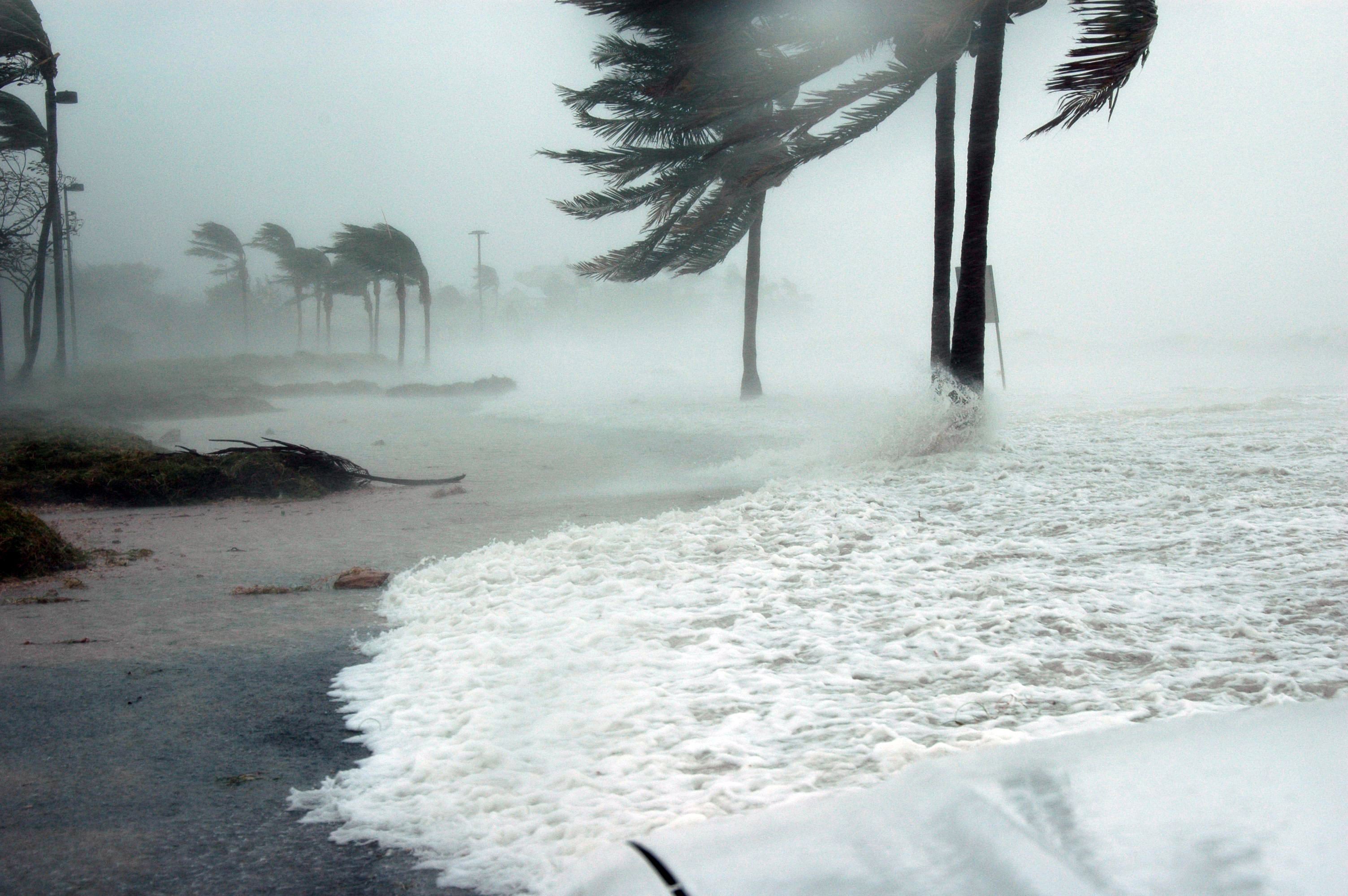Destroy, Rebuild, Repeat: Breaking the Climate-Disaster Cycle

Published by The Lawfare Institute
in Cooperation With

Editor’s Note: This piece has been adapted from a forthcoming article in the Vanderbilt Law Review.
When climate-related disaster strikes in the United States, two questions often arise: Why did we decide to build in these climate-exposed areas? and When can we start rebuilding?
These contradictory questions showcase the lack of a coherent U.S strategy to address climate adaptation and climate-driven disasters.
Meanwhile, extreme weather events are increasing in frequency, intensity, and duration, wreaking havoc on coastlines, lives, and homes.
The science and facts are sobering—consider the following: The Fifth National Climate Assessment estimates that the U.S. experiences a “billion-dollar weather or climate disaster event every three weeks.” According to the U.S. Census, in 2022, an estimated 3 million adults were forced to evacuate their homes due to natural disasters. The United States is experiencing an epidemic in “severe repetitive loss properties”—properties that make multiple claims (at taxpayer expense) when disaster strikes. Case in point: A single home in Mississippi was rebuilt 34 times in 32 years using $663,000 in federal tax dollars—for a home worth only $69,000. Zillow estimates that $1.75 trillion in coastal real estate will be subject to climate-exacerbated flood risk by 2100. Insurance companies are fleeing climate-exposed markets in Florida, California, and Louisiana.
Moving to Climate-Exposed Areas
In light of a climate-destabilized future, surely U.S. laws, policies, and incentives are accounting for this risk?
Not yet.
In fact, U.S. disaster strategy amounts to a pernicious cycle encapsulated by three words—Destroy. Rebuild. Repeat.
This cycle is fiscally unsustainable, legally fraught, and dangerous to first responders and residents alike. Sometimes we retreat. Most times we rebuild in place. Too often we muddle along, “subsidizing sandcastles” (coastal homes) at taxpayer expense along the way.
Climate change is destabilizing the physical environment. Remarkably, Americans are disproportionately moving to areas where the climate problem is at its most acute, favoring sunshine and lower state taxes in exchange for climate risk. Just look at hurricane-prone Fort Myers, Florida, which grew an astounding 623 percent from 1970 to 2020. The growth didn’t stop in 2020. The population of Lee County (where Fort Myers is located) increased 65 percent after Hurricane Ian caused $113 billion in damage in 2022.
People are choosing immediate benefits over long-term climate risk and exposure. I call this the “YOLO climate problem.”
The YOLO climate problem is difficult to solve, but not insurmountable: The National Climate Assessment makes clear that proactive adaptation measures can greatly aid our climate response.
There has to be a better way. In a forthcoming article in the Vanderbilt Law Review, I offer a different path to attempt to break the Destroy, Rebuild, Repeat cycle.
I call this new strategy “Inform, Retreat, Suspend.”
Here’s how it might work:
Inform: Democratize Climate Risk Information
First, homeowners and renters alike need better climate risk information.
Federal and state laws currently obfuscate climate risk. This failure harms sound individual decision-making about where to live and where to invest. For example, under the Federal Emergency Management Agency’s interpretation of the Privacy Act, historical flood claims information is protected, so a prospective homeowner often lacks critical flood claims history prior to purchase. And many states lack any requirements mandating a seller disclose a property’s flood history to a prospective buyer. In a positive sign, New York and New Jersey have changed their real estate disclosure laws. But several states—including Georgia, Florida, and Virginia—lack flood disclosure laws despite being exposed to massive flood risks.
Critical climate risk information is in private, proprietary hands and not easily accessible to the general public, compounding the legal hurdles.
Prospective used car buyers often have greater access to information than prospective homebuyers. If we know a used car’s history, shouldn’t we have the same information when buying a home, the most important financial decision that many Americans will ever make?
Breaking the climate-disaster cycle starts with embracing climate risk transparency. Without it, people can’t make informed decisions about where to live.
Retreat: Stop “Subsidizing Sandcastles”
Second, government officials should incentivize retreat or community relocation from climate-exposed areas. Even if we massively democratize climate risk information, a core group of people will choose to remain in place. This is understandable, as people have a strong attachment to place and community, and retreat is associated with loss and hardship.
Yet we make these decisions more difficult by subsidizing risk. Retreat begins by setting the conditions for success and pricing risk appropriately. The National Flood Insurance Program (NFIP) should be curtailed. Flooding is now the “most frequent and costly natural disaster in the United States,” yet the NFIP provides federally backed, taxpayer-subsidized flood insurance to homes located in the floodplain. Today, millions of insurance policies are in place. Following massive payouts in Hurricanes Katrina, Harvey, and Sandy, the NFIP is billions of dollars in debt—with no end in sight. The NFIP creates a classic moral hazard: Homeowners in the coastal zone decide how much risk to take while the federal government (and taxpayers) bear the cost when a flood disaster strikes. Retreat should include curtailing the NFIP and expediting buyouts where it makes sense.
Beyond the NFIP, state-subsidized insurance is also exacerbating the Rebuild step in climate risk’s vicious cycle. As private insurance providers flee climate-exposed markets, state-subsidized insurance companies in California, Louisiana, and Florida are filling the void. Florida Citizens is the largest insurer in Florida, and its enrollment has more than doubled in the past few years. Sen. Sheldon Whitehouse (D-R.I.), chairman of the Senate Budget Committee, has taken notice of Citizens' rapid expansion and blurry fiscal picture. He recently expressed concern that Citizens would be unable to cover insured losses in the face of a disaster.
And what of the federal government’s role after disaster strikes?
The Stafford Act serves as a blanket national insurance policy, providing federal disaster relief when disaster (inevitably) strikes. What emerges: an alarming disconnect between adaptation planning and disaster response.
The Stafford Act should build on earlier efforts to invest in hazard mitigation before disaster strikes. By one estimate, for every dollar spent on federal mitigation grants, the federal government saves $6 down the line—a return on investment that should spark bipartisan support.
Suspend: Halting Governmental Services
Finally, at some point, the federal government must suspend services to areas uniquely exposed to climate change. Suspension implicates both the scope of the duty to rescue (such as refusal to provide emergency services following a disaster) as well as the duty to repair and maintain key roads. This is harsh, but dealing with climate-driven impacts will be fraught with difficult choices.
The question of where to suspend services raises enormous questions of climate justice. After all, the poorest communities are the most exposed to climate change and lack the resources to combat climate change. So, why should suspending services be considered, given these inequities?
First, the current approach is fiscally unsustainable. Consider Highway 12, a key coastal road to North Carolina’s Outer Banks region. Between 2010 and 2020, hurricanes caused $65 million in damage to Highway 12. One of the islands was evacuated five times in recent years. Climate change and the uptick in extreme weather events presents state and local leaders with difficult choices. They can make the difficult decision to not repair or maintain key coastal access roads and face possible litigation from homeowners whose access is now limited. Or they can continue to spend money on roads such as Highway 12 or Old A1A in Florida at a considerable expense that is only likely to recur.
Second, living in disaster-prone areas endangers the lives of first responders who are called on to assist citizens who voluntarily choose to live in such areas. When disaster strikes, there is an understandable human desire to help. But pre-disaster decisions on where to live determine the scope and scale of the emergency response. During a presidentially declared “major disaster,” local first responders are often overwhelmed and federal resources are brought to bear. This includes a growing role for the U.S. Coast Guard and National Guard to supplement state and local emergency first responders. These first responders act heroically, saving people and property.
Responders also face enormous risks. According to the Environmental Protection Agency, emergency response workers (firefighters, paramedics, military, and police) are “more likely to be exposed to climate-related risk such as wildfire smoke or flooding from a heavy rainfall.” This is not an abstract danger: Six firefighters lost their lives in California fighting an extreme weather event in 2018. Any shift in disaster policy must take into account the real cost in health, safety, and welfare to first responders; we shouldn’t chalk this up to unavoidable climate costs when climate science is informing us with ever-greater clarity where disaster is poised to strike.
Beware the “Disaster-Reconstruction Complex”
Any plans to break the climate-disaster cycle will face political and structural headwinds from the “disaster-reconstruction complex.” This shadowy marriage brings together four entities: municipalities, real estate developers, existing homeowners, and disaster contractors. These interests thwart otherwise well-meaning disaster and adaptation policies, thus perpetuating the Destroy, Rebuild, Repeat cycle. Economists have labeled this undertheorized dynamic a “growth machine,” one where coastal construction fills developer coffers, municipalities clamor for increased property tax revenue, and homeowners protect their home’s value. This growth machine is further supported by a vast array of disaster reconstruction contractors who benefit from extreme weather events and are eager to provide essential services—at a markup.
Today’s disaster laws and policies perpetuate a Destroy, Rebuild, Repeat cycle. What may have been workable for a comparably more stable “Earth 1.0” is simply unworkable for a climate-destabilized “Earth 2.0.” Despite some minor statutory reforms and the emergence of a National Climate Resilience Framework, we must think bigger and bolder. Indeed, rebuilding in climate-exposed communities is fiscally irresponsible and dangerous for citizens and the emergency first responders who are called to action. Our ability to break the climate-disaster cycle will determine future adaptation, disaster, and climate progress.



krakd.jpeg?sfvrsn=c6e2ba28_5)

